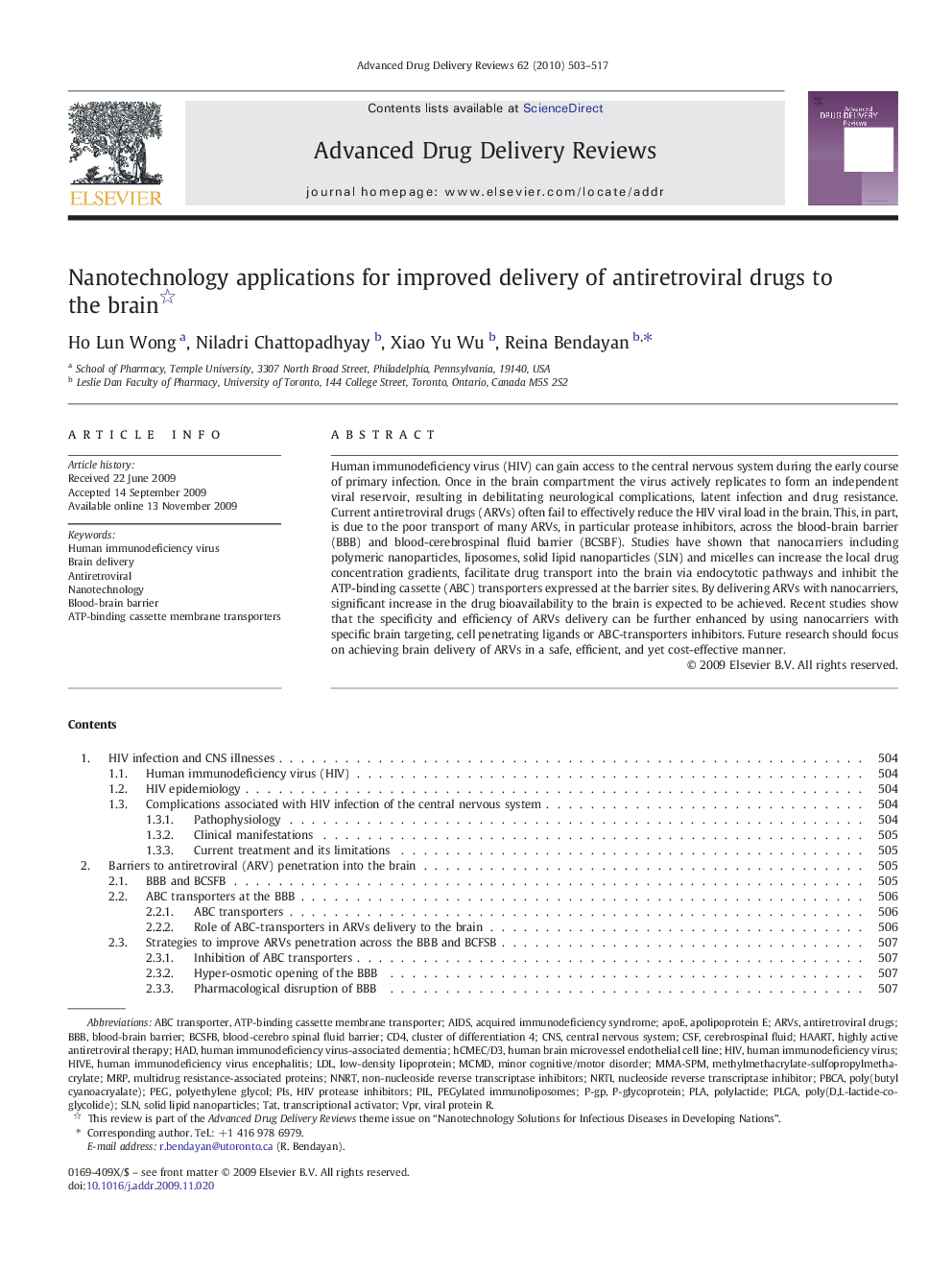| Article ID | Journal | Published Year | Pages | File Type |
|---|---|---|---|---|
| 2071444 | Advanced Drug Delivery Reviews | 2010 | 15 Pages |
Human immunodeficiency virus (HIV) can gain access to the central nervous system during the early course of primary infection. Once in the brain compartment the virus actively replicates to form an independent viral reservoir, resulting in debilitating neurological complications, latent infection and drug resistance. Current antiretroviral drugs (ARVs) often fail to effectively reduce the HIV viral load in the brain. This, in part, is due to the poor transport of many ARVs, in particular protease inhibitors, across the blood-brain barrier (BBB) and blood-cerebrospinal fluid barrier (BCSBF). Studies have shown that nanocarriers including polymeric nanoparticles, liposomes, solid lipid nanoparticles (SLN) and micelles can increase the local drug concentration gradients, facilitate drug transport into the brain via endocytotic pathways and inhibit the ATP-binding cassette (ABC) transporters expressed at the barrier sites. By delivering ARVs with nanocarriers, significant increase in the drug bioavailability to the brain is expected to be achieved. Recent studies show that the specificity and efficiency of ARVs delivery can be further enhanced by using nanocarriers with specific brain targeting, cell penetrating ligands or ABC-transporters inhibitors. Future research should focus on achieving brain delivery of ARVs in a safe, efficient, and yet cost-effective manner.
